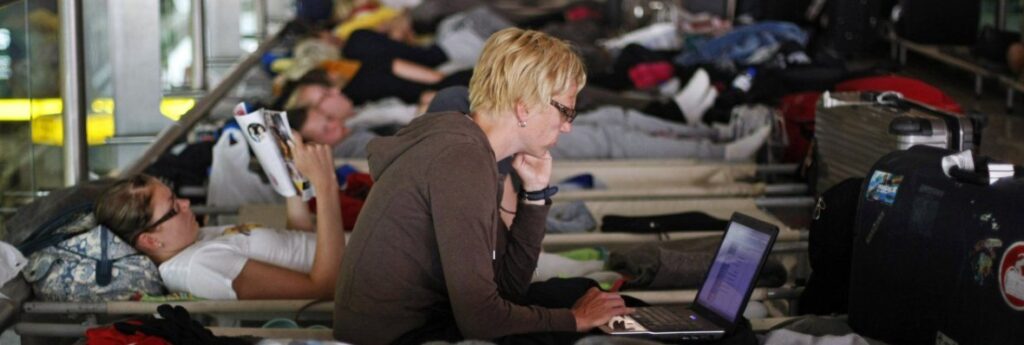The fire that closed London Heathrow Airport last Friday sparked one of the most serious disruptions to air travel in years. More than 1,300 flights were cancelled and hundreds of thousands of journeys were disrupted following the blaze at an electrical substation near the airport. But the incident wasn’t the first – and certainly not the worst – to cause air travel chaos in recent years.
Here is a look at some past incidents:
July 2024: Faulty software causes chaos
A faulty software update sent to millions of Microsoft customers by cybersecurity firm CrowdStrike caused technological havoc worldwide. Airlines lost access to their booking systems, thousands of flights were cancelled and tens of thousands were delayed, leading to long lines at airports in the US, Europe, Asia and Latin America.
August 2023: UK air traffic control problems
A glitch at Britain’s National Air Traffic Services in August 2023 meant flight plans had to be processed manually, rather than automatically. Hundreds of flights were delayed or cancelled at the height of the summer holidays. The NATS system had already suffered several software-related failures in the years after it opened in 2002.
March 2020: COVID-19 pandemic
As a new coronavirus spread around the globe in early 2020, the world’s airports shut down. Many governments closed national borders and imposed travel restrictions. By April, the number of flights around the world had fallen by 80%. When air travel resumed, it was with masks, mandatory coronavirus tests and other measures that made flying more onerous and expensive. It wasn’t until 2024 that global passenger numbers reached 2019 levels again.
December 2018: Gatwick drone sightings
More than 140,000 travellers were stranded or delayed after dozens of drone sightings shut down London Gatwick, south of the UK capital and Britain’s second-busiest airport, for parts of three consecutive days before Christmas. A monthslong police investigation failed to identify the culprits or determine how many of the sightings were real.
May 2017: British Airways IT glitch
A computer failure at a British Airways data centre forced the airline to cancel all flights from Heathrow and Gatwick on a holiday weekend. The airline blamed a power-supply issue for the incident which affected some 75,000 travellers.
August 2016: Delta outage
Delta Air Lines planes around the world were grounded when an electrical component failed and led to a shutdown of the transformer that provides power to the carrier’s data center. Delta said that it cancelled more than 2,000 flights and lost US$100 million in revenue as a result of the outage.
April 2010: Iceland’s volcano
People around the world learned how to pronounce the name of Iceland’s tongue-twisting Eyjafjallajökull volcano (ay-yah-FYAH-lah-yer-kuhl) after it roared to life, sending plumes of ash and dust into the atmosphere. Airspace over northern Europe was shut for several days and airlines cancelled flights between Europe and North America because of concerns the ash could damage jet engines. More than 100,000 flights were cancelled, stranding millions of passengers, at an estimated cost of $3 billion.
September 2001: 9/11
U.S. airspace was closed to commercial flights on Sept. 11, 2011 after hijackers crashed planes into the World Trade Center towers, the Pentagon and a field in Pennsylvania. Thousands of planes were grounded and flights in the air heading for the U.S. were diverted to Canada and Mexico. Flights began to resume two days later, but air travel was forever altered, with passengers facing more rigorous security, more intrusive scrutiny and longer lines.
If this article was shared with you by a friend or colleague, you may enjoy receiving your own copy of Travel Industry Today with the latest travel news and reviews each weekday morning. It’s absolutely free – just CLICK HERE.

